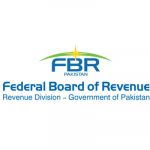Country property prices in the UK continued rising in the first quarter of this year, up 2%, and are now 4.3% higher than they were a year ago, according to the latest price index.
Prices have now increased in the sector in every region of the country apart from Scotland, the Knight Frank Prime Country House Index shows. The Home Counties are leading the market with 2.9% growth in the quarter and annual growth of 9.1%.
A significant imbalance between supply and demand is helping to push prices upwards, but more stock could come to the market after the general election, according to analysts as there is a shortage of quality houses for sale.
‘A shortage of property for sale and a resurgence in demand is helping to boost prices in most parts of the UK. Compared with this time last year Knight Frank has seen instructions drop by 30%, while sales have increased by the same amount. This has led to a dwindling pool of really good houses for buyers to choose from,’ said Andrew Shirley, Knight Frank’s head of rural property research.
‘Around London, this general imbalance between supply and demand has been exacerbated by the ripple effect of the substantial increase in the number of overseas buyers looking for prime property in the capital. Last year, Knight Frank sold London houses to 49 different nationalities and country properties to people from 38 different countries,’ he added.
Price rises have been less dramatic further from London, but annual growth of around 5% in south west and central England is still very healthy, Shirley said. In the north, prices have started to recover more recently, but are still up over 3% on the year. The prime Scottish market has just hit the bottom of the cycle and should see a return to positive growth over the next three months.
‘The big question now is whether prices can continue to rise during the rest of the year as the fiscal austerity needed to cope with the UK’s budget deficit starts to bite, especially if, as expected, more people decide to put their houses up for sale after the general election,’ Shirley said.
‘Our feeling is that unless there is a real glut of houses, which seems unlikely, prices will remain steady, even if growth is much flatter. Sterling also looks likely to remain weak for the rest of the year and this should continue to encourage more overseas buyers in and around London,’ he added.
Stock is currently very low, but more properties should come to the market after the typical lull that generally occurs around a general election, according to Rupert Sweeting, Knight Frank’s head of country department.
‘Provided that that the economy does not have to suffer the uncertainty of a hung parliament, the remainder of 2010 offers a great window of opportunity for buyers and sellers to secure a deal before a possible rise in interest rates and an increase in stamp duty from 4% to 5% in 2011 for properties worth over £1 million,’ he added.







